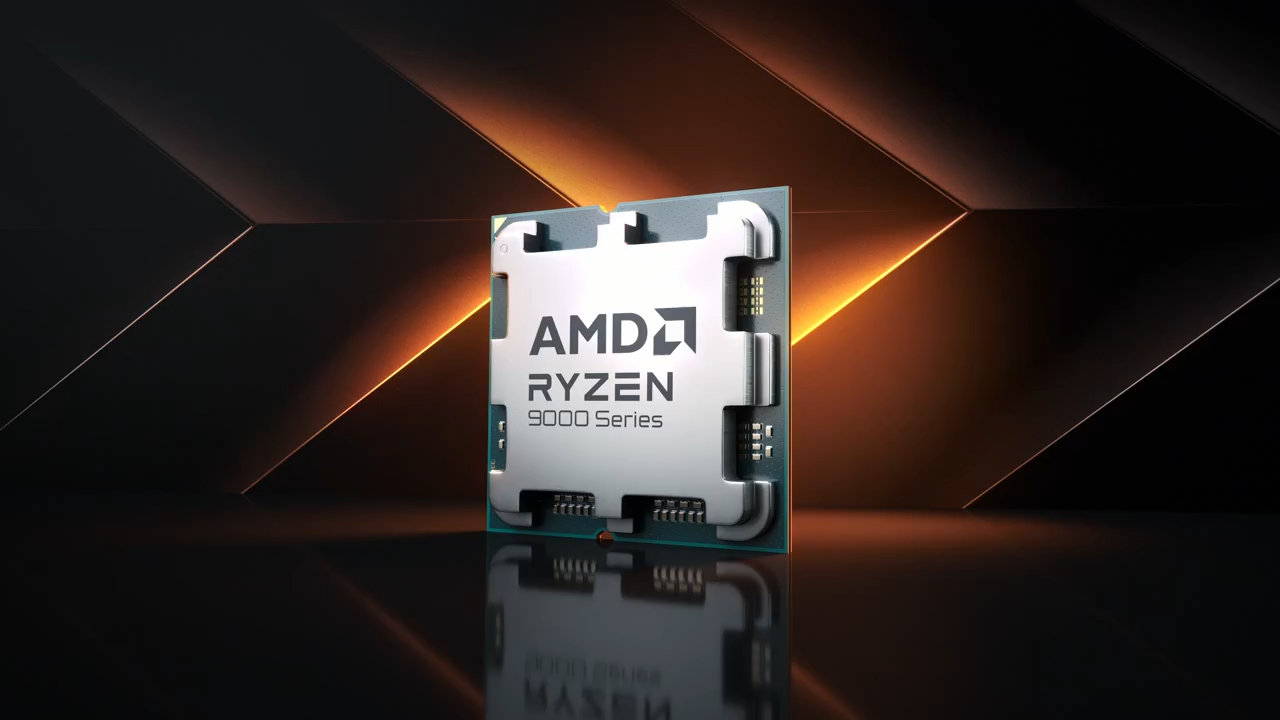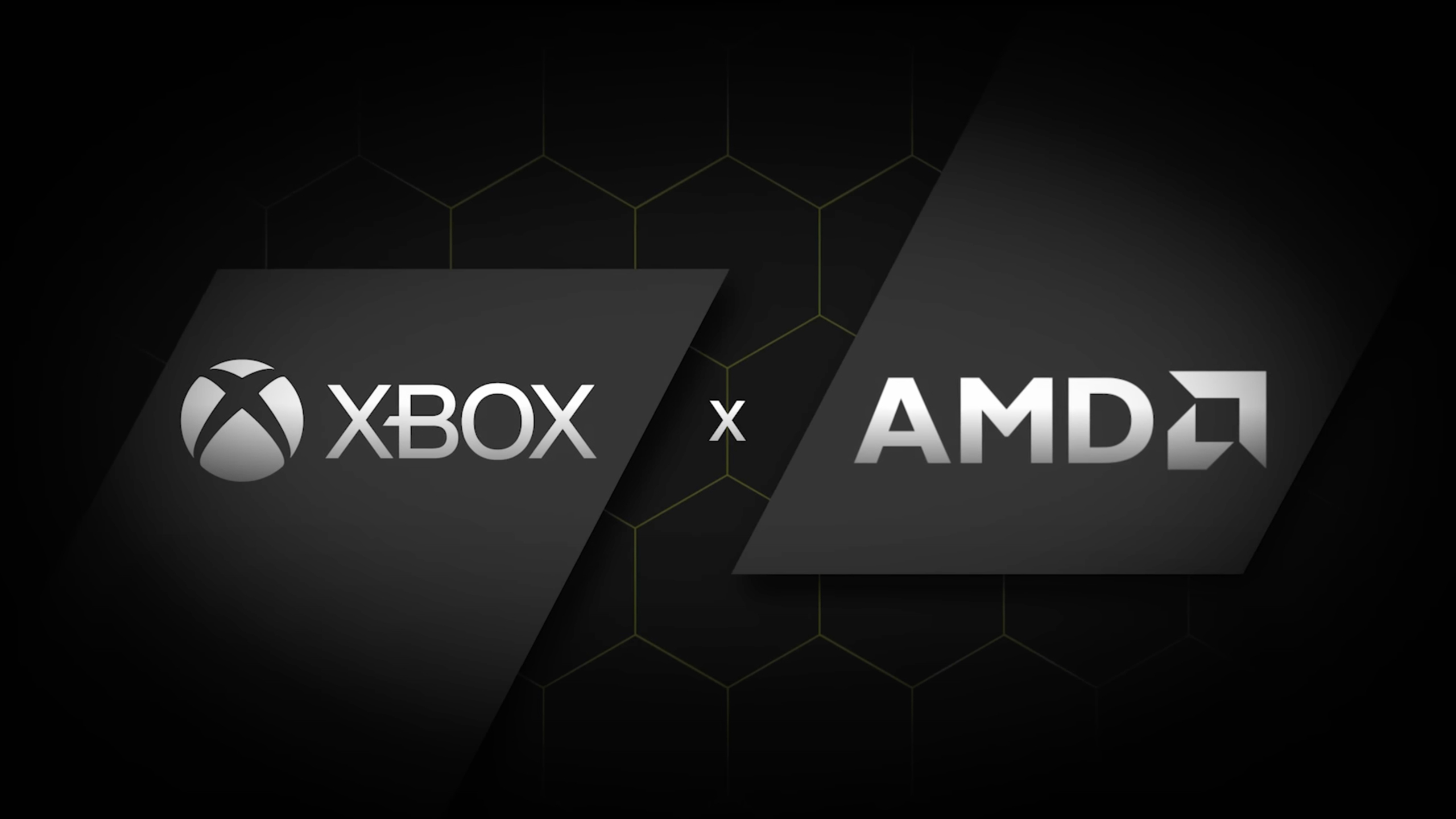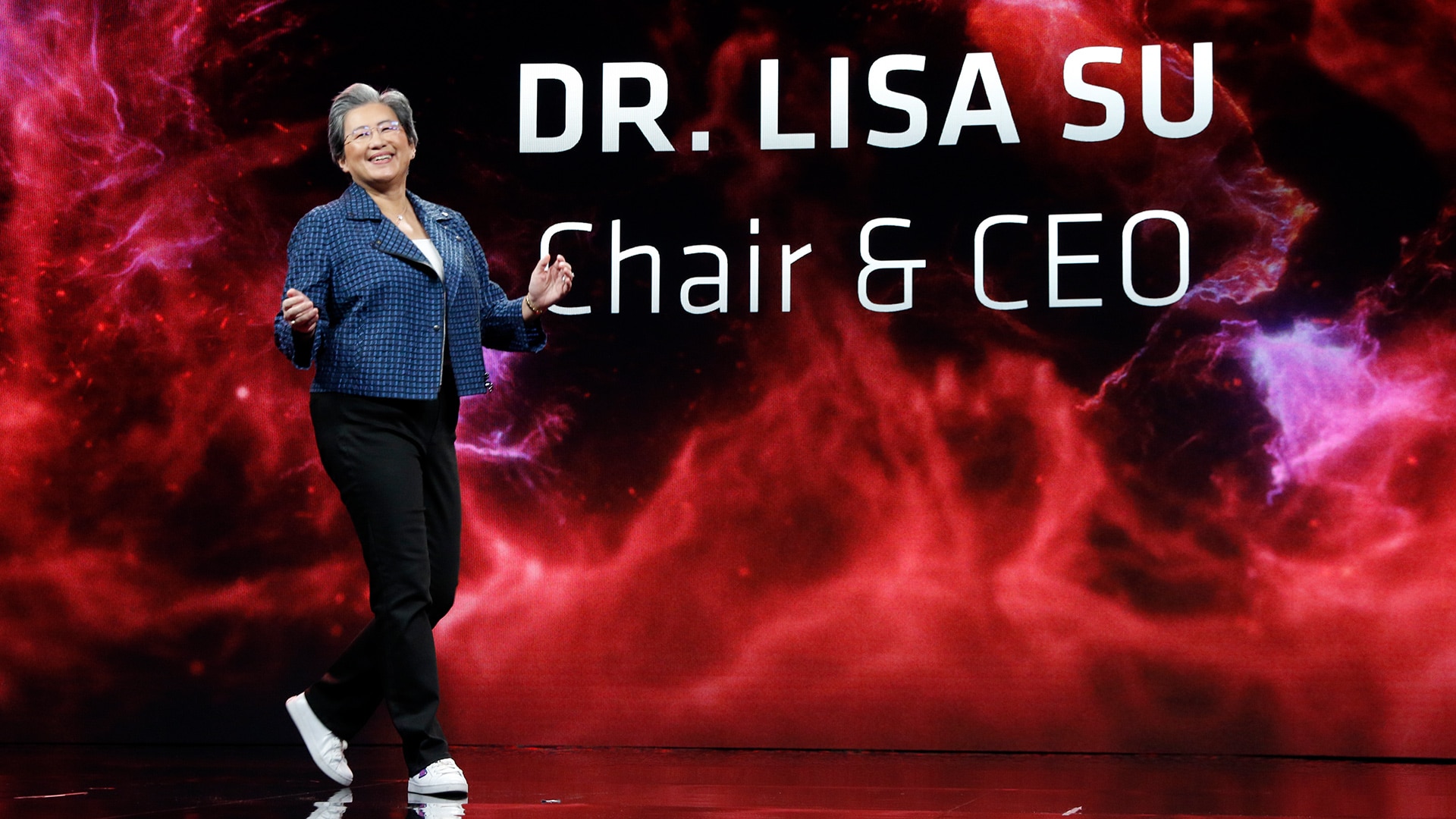How AMD’s partnership with Microsoft could help Team Red stay competitive against Nvidia
AMD gets gaming deal boon after gaming revenues fall

Microsoft announced this week that it had extended its partnership with AMD, who will be designing the chips to go in the company’s next-generation Xbox games consoles. While it might seem like an obvious bet, this is still a big win for AMD, and potentially for consumers, too.
For AMD, this represents a long-tail partnership with likely tens of millions of chip orders over the life of the next-generation console, and even more when you factor in Microsoft’s language around expanding portable gaming options.
But for the end-consumers, who have increasingly felt like an afterthought to gaming graphics (and now AI) giant, Nvidia, this is a commitment from AMD to maintain a significant stake in the gaming segment. Microsoft’s approach with Xbox is a far cry from Nintendo, whose console designs don't require cutting-edge hardware. In general, Microsoft’s Xbox lineup has always aimed at higher-end enthusiast users, rather than the lifestyle segment, which Nintendo targets.
The next-gen Xbox will need to be powerful, which means that AMD needs to continue to remain competitive in terms of both graphical performance and efficiency.
What this means for Xbox
As much as Microsoft’s announcement was likely a welcome one for AMD, this is what many industry pundits expected of a future next-generation Xbox console. Microsoft has used AMD hardware for its past two generations of the console, starting with the Xbox One. Combining AMD CPUs with AMD GPUs has proven a potent combination, despite Nvidia’s dominance in GPUs on PC. Sticking with AMD for another generation might also help keep things straightforward for Microsoft and game developers.
Sticking with AMD might ease backward compatibility between different generations of Xbox consoles, which ensures that the new-generation system has a large software library on day one, even if the launch lineup isn’t extensive. Game developers who have been working on Xbox games in the past will also find it easier if the hardware is just new-generations of the same thing. The Xbox Series X/S uses a custom Zen 2 CPU and RDNA 2 GPU, so a next-generation Xbox may be likely to use newer generations of both those architectural designs.
As for what that new hardware will be, all we have is speculation for now. However, with AMD’s regular release cadence and a history of launching new consoles with new hardware around the same time as their desktop counterparts, we can make some educated guesses about what the “Next Xbox” will have under the hood.

The Xbox One featured a custom AMD APU using Jaguar modules, which launched in mid-2013, a few months before the Xbox One hit store shelves. The Xbox Series X used Zen 2 and RDNA 2, which launched in mid-2019 and end-2020, respectively. All very close to the console’s November 2020 launch.
With rumors pointing to a late 2026 or early 2027 launch for a next-generation home Xbox console, that would put it in line to leverage AMD’s latest hardware at the time: purportedly Zen 6 CPUs and RDNA 5 graphics. Or, it might even potentially use the first iteration of AMD’s planned UDNA architecture, which it teased last year.
It’s less clear what hardware we might see in future Xbox handheld systems that were also hinted at in the partnership announcement. But considering AMD’s Z-series mobile APUs have been used in many recent handhelds, including the Xbox Ally X from Asus, it’ll probably be a successive generation of that. Zen 6 APU, anyone?
Windows on console?
Arguably, the greater speculation for the next-generation Xbox is what software it will run. Where Xbox consoles to date have run a custom Xbox System Software package, it has grown increasingly tied to Windows with each successive generation. The latest Xbox Series X/S console is based on the Windows 11 core operating system.
Microsoft’s recent tie-in with Asus for its Ally X handheld Xbox gaming system just runs on a standard Windows install, too, raising speculation that the next Xbox may be based on Windows. It might have an Xbox theme or UI flourishes, but ultimately, it’ll likely be something very similar.
It makes sense, given the way consoles have become increasingly capable and PC-like in recent generational releases, and Microsoft has started shifting its marketing to potentially lay some groundwork for this shift.
It has recently started using the “Xbox PC” branding, or it could be an effort to encourage game streaming from Xbox. But, it also sounds very much like it’s attempting to unify the message that anything could be an Xbox, including Windows.
This could be crucial for Microsoft, as Linux has become a real competitor in the gaming space, especially thanks to devices like the Steam Deck, and the more widespread adoption of gaming on Linux using desktop PCs. It could also be the case that Microsoft would be looking to leverage its console’s name recognition and existing install base to shore up support for gaming on Windows.
In a callback to console exclusivity, which was more common in consoles of generations past, Microsoft could pitch Xbox and Windows as coexistent and comingled gaming platforms, shunning SteamOS and other Linux-based equivalents, which have their own unique selling points.
Indeed, consoles are often pitched as simpler and more streamlined than PCs for gaming. Microsoft could use Xbox to make the case that Windows is still that option for gamers, too.
A boon for AMD

As beneficial as this move will be for Microsoft, though, it’s arguably a much bigger win for AMD. Its gaming revenue was down significantly in the first quarter of 2025, so securing probable orders of tens of millions of future chips for next-gen consoles is money that AMD can bank on heavily moving forward.
This also gives AMD additional reason to continue investing in areas where it still falls behind its main rival, Nvidia. Team Green has been one step ahead of AMD in ray tracing and AI upscaling since it unveiled the first generation of those technologies in 2018. While AMD has caught up significantly, it’s very clear that Nvidia is the global AI king and is likely to remain that way for the foreseeable future.
However, Nvidia's chip shortages in an unstable global trade environment, its major focus on data centers and “AI factories,” and its near-monopolistic position in the industry could leave companies looking for alternatives. AMD doesn’t have the kind of hardware Nvidia has, nor the software ecosystems to back it up. But it can still produce very capable hardware and impressive software. The potential is there for more than one major company in the gaming space, and AMD’s extended partnership with Microsoft could help to keep the wheels greased to keep competing on an enthusiast level.
For Nvidia, gaming now represents less than 10% of its yearly revenue; it’s a much smaller part of a business that is now oriented primarily around AI and enterprise hardware.
AMD being known as the power behind a next-generation games console (and probably Sony’s too, considering the pattern in recent generations) keeps it front-and-center in people’s minds. It keeps developers working with AMD hardware and software, too, which can only help improve adoption and support elsewhere.
AMD isn’t going to jump from being a multi-hundred-billion-dollar company to a multi-trillion-dollar company overnight just because of one announcement, but this is a big one. And if AMD can play its cards right, it has the potential to become more agile at competing in the enthusiast GPU market.
Follow Tom's Hardware on Google News to get our up-to-date news, analysis, and reviews in your feeds. Make sure to click the Follow button.

Jon Martindale is a contributing writer for Tom's Hardware. For the past 20 years, he's been writing about PC components, emerging technologies, and the latest software advances. His deep and broad journalistic experience gives him unique insights into the most exciting technology trends of today and tomorrow.
-
rluker5 The latest news makes it sound like Xbox is going 100% third party: https://wccftech.com/amd-ceo-were-designing-a-full-roadmap-of-gaming-chips-for-xbox/Reply
With just an Xbox sticker and no first party, walled garden game supported hardware discount.
Basically PCs with console branding means no more Xbox console as we know it if this is true.
Also means PS6 only has to compete with PC on price.
Might be bad for AMD and certainly will be bad for those that prefer consoles for price and simplicity. -
TerryLaze Reply
That's what consoles are since 2013 when they went to x86, especially for xbox since they where, and still are, using a version of windows for their consoles.rluker5 said:Basically PCs with console branding means no more Xbox console as we know it if this is true.
Not any worse or any better than the last 12 years.rluker5 said:Might be bad for AMD and certainly will be bad for those that prefer consoles for price and simplicity.
Ms and sony are going to pay for some R&D and AMD is going to get new products out of it for selling (they regularly make APUs from the console designs).
Most if not all things MS will design, be it handheld or console or PC, will still be AMD APU.
The only bad thing for AMD is the extremely low margin on the APUs they sell for the consoles. -
rluker5 Reply
But if an Asus, Zotac, ibuypower, etc. "xbox" costs $800-$1000 for what one could build on pc for $800-$1000 and they are not 100% standardized because AMD is building a whole xbox ecosystem of APUs then it will be more like a steam box and may lose all of the volume of homogenized adoption.TerryLaze said:That's what consoles are since 2013 when they went to x86, especially for xbox since they where, and still are, using a version of windows for their consoles.
Not any worse or any better than the last 12 years.
Ms and sony are going to pay for some R&D and AMD is going to get new products out of it for selling (they regularly make APUs from the console designs).
Most if not all things MS will design, be it handheld or console or PC, will still be AMD APU.
The only bad thing for AMD is the extremely low margin on the APUs they sell for the consoles.
And I'm reading Lisa Su stating AMD is planning on making a broad array of gaming chips for xbox not as there will be a large variety of MS built xboxes, but there will no MS built xboxes and just MS approved 3rd party systems with various configurations that carry the xbox seal of approval. Why would MS make their own xbox and undercut their AIBs by subsidizing their MS built model with game sales that likely won't be there if more launchers than the xbox store runs on them? And why would an AIB make something to MS xbox seal of approval if they were going to be kneecapped in sales by MS undercutting their price? -
TerryLaze Reply
Yeah that's kinda the point of all of MS/xbox advertisement lately.rluker5 said:and they are not 100% standardized because AMD is building a whole xbox ecosystem of APUs then it will be more like a steam box and may lose all of the volume of homogenized adoption.
"This is an Xbox"
This assumes that MS's main goal is to make big partnerships with every single AIB out there....rluker5 said:And I'm reading Lisa Su stating AMD is planning on making a broad array of gaming chips for xbox not as there will be a large variety of MS built xboxes, but there will no MS built xboxes and just MS approved 3rd party systems with various configurations that carry the xbox seal of approval. Why would MS make their own xbox and undercut their AIBs by subsidizing their MS built model with game sales that likely won't be there if more launchers than the xbox store runs on them?
What I think is that MS will make a steam deck (but today) level of portable console and sell that together with a probably stronger normal console.
And then if anybody wants to make anything with the xbox logo on it MS will let them.
Because they already made it anyway, it already is more expensive, it already does sell, and if they can stick the xbox name on there it will be another reason for people to buy it.rluker5 said:And why would an AIB make something to MS xbox seal of approval if they were going to be kneecapped in sales by MS undercutting their price?
Same thing that happens with the steam OS device thing. -
mwestall Reply
But they *are* going to be standardized, they will mandate specific AMD APUs or CPU/GPU pairings on specific chip sets with specific minimum, and possibly maximum, ports/slots and a specific "x-box enhanced" version of windows, which will probably default to booting into the x-box gaming environment rather than windows desktop. Physical form factors to be decided by OEM after approval from MS. More 'variety' for consumers, less risk for MS, guaranteed income streams for MS and AMD, risk offloaded to OEMs.rluker5 said:But if an Asus, Zotac, ibuypower, etc. "xbox" costs $800-$1000 for what one could build on pc for $800-$1000 and they are not 100% standardized because AMD is building a whole xbox ecosystem of APUs then it will be more like a steam box and may lose all of the volume of homogenized adoption.
And I'm reading Lisa Su stating AMD is planning on making a broad array of gaming chips for xbox not as there will be a large variety of MS built xboxes, but there will no MS built xboxes and just MS approved 3rd party systems with various configurations that carry the xbox seal of approval. Why would MS make their own xbox and undercut their AIBs by subsidizing their MS built model with game sales that likely won't be there if more launchers than the xbox store runs on them? And why would an AIB make something to MS xbox seal of approval if they were going to be kneecapped in sales by MS undercutting their price? -
rluker5 Reply
You are looking at this from the point of a pc builder who has no more trouble choosing a pc by its specs than a console buyer choosing a tv by its brand name and size. The average console buyer will either learn to buy by pc spec like you, and probably just upgrade the GPU on their pc for less, or buy a cheaper PS6 that makes sense to them because it isn't a fake xbox that used to be xbox but is now some huge confusing selection of off brands that cost a lot more. The only problem is that the PS6 will also cost more because they will no longer have the MS game subsidized model to compete with on price.mwestall said:But they *are* going to be standardized, they will mandate specific AMD APUs or CPU/GPU pairings on specific chip sets with specific minimum, and possibly maximum, ports/slots and a specific "x-box enhanced" version of windows, which will probably default to booting into the x-box gaming environment rather than windows desktop. Physical form factors to be decided by OEM after approval from MS. More 'variety' for consumers, less risk for MS, guaranteed income streams for MS and AMD, risk offloaded to OEMs.
If the 2 options are fake off brand xboxes and a PS6, all of which cost way too much, why not stick with the series X or PS5? After all there will be backwards compatibility and probably forwards compatibility if the new console market isn't selling enough for the game devs to up the minimum game requirements.
Edit: Windows already has the feature that if you hit the xbox button on desktop you can select one of your recent games and start it with the gamepad alone. -
mwestall Reply
"Fake, off brand x boxes"??? Verified 3rd party builds will not be 'fake', just as 3rd party game titles are not 'fake', they will be guaranteed to run verified titles with verified features. MS wants to have the ability for bigger, better, faster systems (and cheaper, capable ones) without the hassle of building them itself, because it grows the market for the software, which is what gets profits, the hardware is a loss leader, so why not have 3rd parties take that risk while MS can get on with its core business of software.rluker5 said:You are looking at this from the point of a pc builder who has no more trouble choosing a pc by its specs than a console buyer choosing a tv by its brand name and size. The average console buyer will either learn to buy by pc spec like you, and probably just upgrade the GPU on their pc for less, or buy a cheaper PS6 that makes sense to them because it isn't a fake xbox that used to be xbox but is now some huge confusing selection of off brands that cost a lot more. The only problem is that the PS6 will also cost more because they will no longer have the MS game subsidized model to compete with on price.
If the 2 options are fake off brand xboxes and a PS6, all of which cost way too much, why not stick with the series X or PS5? After all there will be backwards compatibility and probably forwards compatibility if the new console market isn't selling enough for the game devs to up the minimum game requirements.
Edit: Windows already has the feature that if you hit the xbox button on desktop you can select one of your recent games and start it with the gamepad alone.
